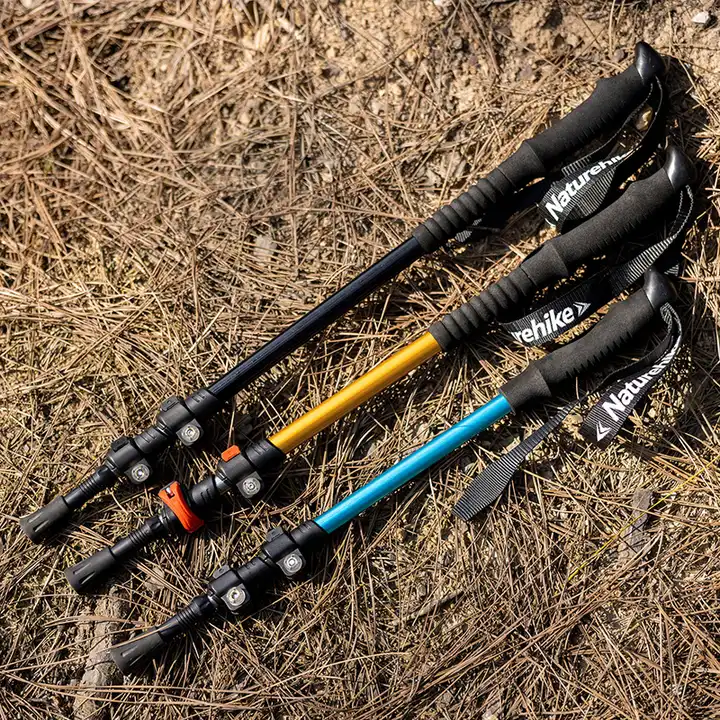Trekking poles are commonly used equipment for hikers, mountaineers, and backpackers, as they can improve stability while walking.
How should beginners choose trekking poles?
First, let’s talk about the types of trekking poles.
Hiking crutches vs hiking poles:
Trekking poles are usually straight, and you use one in each hand. They can improve balance and assist in walking. Hiking crutches, on the other hand, are shorter and typically have a T-handle, providing stable support for those with less mobility in their legs. So if you’re a healthy person, go for trekking poles.
Adjustable vs non-adjustable:
In general, it’s recommended to choose adjustable trekking poles. They can provide better stability and grip when going uphill or downhill.
Foldable vs non-foldable:
It’s advisable to choose foldable trekking poles as they are easier to pack into your backpack. However, keep in mind that they may have less adjustability compared to non-foldable poles.
Now let’s talk about how to select trekking poles.
Shock absorption:
It’s recommended to purchase trekking poles with shock absorption, especially if you have any injuries. Shock absorbers can help reduce impact on your wrists. However, they may add extra weight to the poles and affect stability.
Weight:
When trekking for long periods, the weight of the poles is crucial. Opt for lightweight trekking poles to reduce fatigue, as you will be swinging them thousands of times a day.
Wrist straps:
Most trekking poles come with polyester fiber wrist straps, which are cheap and quick-drying but prone to wear and tear. Nylon straps are lightweight and durable but can cause blisters. Leather straps are more expensive but offer comfort and durability without absorbing sweat or water.
Adjustable locking mechanisms:
Some trekking poles have a sleeve-and-drawstring mechanism, which is stable but sacrifices adjustability. Others use a combination of external locks and internal locks for better adjustability.
Material:
Aluminum alloy trekking poles weigh above 200g. If a pole is too light, it likely means the thickness of the tube has been compromised. Choose a 7000-series aluminum alloy pole instead of a 6000-series, which is cheaper but less sturdy.
Carbon fiber poles weigh around 180g and are lighter than aluminum, but they are also more expensive. Carbon fiber has good elasticity, but they can snap under strong lateral force.
Grip:
Plastic/rubber grips are harder and can cause blisters. Budget-friendly trekking poles often use this type of grip. Foam materials are more economical, provide a comfortable grip, and are lightweight. Cork grips offer excellent feel but may lose their quality over time and add weight as most trekking poles use recycled cork.
Locking mechanisms:
External locks are the easiest to use. Internal expansion locks are cheaper but can accidentally unlock. Quick-release locks are sometimes used in entry-level trekking poles.
Length:
Choose the appropriate length of trekking poles based on your height. The double 90-degree rule can help you find the right length. When holding the poles, your forearms should form a 90-degree angle, and the poles and your forearms should also form a 90-degree angle. Adjust the length of the poles according to your condition when going uphill or downhill, shortening them by 5-10 inches for uphill and extending them by 5-10 centimeters for downhill.



